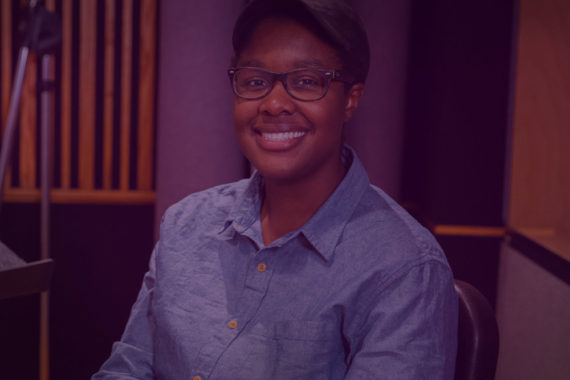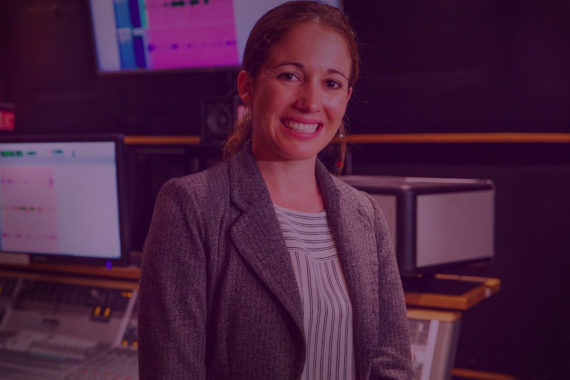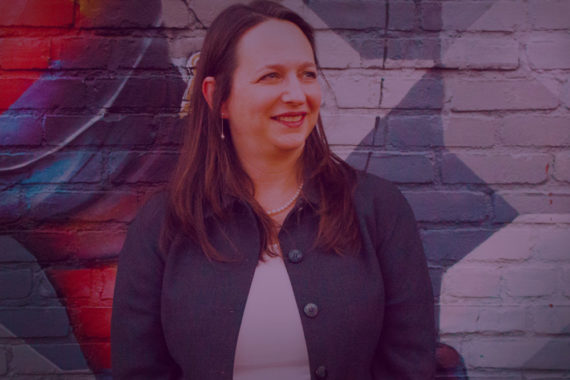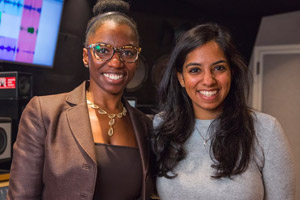
Amrita Saigal, Founder of Saathi (right), with guest
host Asha Collins (photo credit: Sandra Garcia)
Pipeline Angels member Asha Collins gets the 60-second pitch from Amrita Saigal of Saathi, which manufactures biodegradable sanitary pads made from banana fiber in India for anyone who gets periods. Mitzi Chang of Goodwin on documentation issues in the Legal Minute. And, this week’s Investor Take from Ruth Ann Harnisch of The Harnisch Foundation.
Music courtesy of Seven Seas Music (a Pipeline Angels portfolio company!)
EPISODE TRANSCRIPT
* indicates emphasis
Natalia: Hi everyone, my name is Natalia Oberti Noguera. I am the Host and Creator of Pitch Makeover and I’m also the founder and CEO of Pipeline Angels, where we are changing the face of angel investing and creating capital for women and non-binary femme social entrepreneurs.
Gina: And I’m Gina Delvac, the founding Executive Producer of Pitch Makeover. We’re taking the concept of a fashion makeover and applying it to startup pitches. Entrepreneurs pitch, we talk, and then we share some feedback on what they should keep, delete, and maybe even more important—add to their pitch. Our goal: help more voices—as Rihanna says—shine bright like the diamonds that they are.
And after the Pitch Makeover we have the Legal Minute with Mitzi Chang of Goodwin answering burning startup legal questions, followed by First Pitch, and stay to the end for this week’s Investor Take from Ruth Ann Harnisch of The Harnisch Foundation.
Asha: [1:00] Hi, I’m Dr. Asha Collins. Welcome to Pitch Makeover. I’m a Pipeline Angels member, and I’m your host guest host today. We’re here today with Amrita Saigal of Saathi. We’re really excited to have Amrita here because she’s actually a Pipeline Angels portfolio company. Welcome!
Amrita: Thank you, Asha.
Asha: Are you ready to pitch?
Amrita: I am.
Asha: Alright, your one minute timed pitch right now!
Amrita: Hello, my name is Amrita Saigal and I’m one of the—one of the co-founders of Saathi, a social enterprise in which we manufacture 100% biodegradable and compostable sanitary pads. I studied mechanical engineering at MIT and previously worked as an automation and design engineer for Always pads.
Traditional pads made by large multinational corporations are comprised majority of plastic and take over 500 years to degrade in landfills. Additionally, the core of the pads are made from [2:00] wood pulp which means cutting down trees and harming the environment. In India alone today over 48,000 tonnes of plastic waste and 280,000 tonnes of carbon dioxide emissions are generated annually from sanitary pad waste alone, and this is with only sixteen percent of women in India using sanitary pads today. This number will only increase as sanitary pads use increases.
To address these issues, Saathi has developed the first—the world’s first biodegradable and compostable sanitary pad made from waste banana tree fibre. Our headquarters is located in Ahmedabad and since launching a few months ago we have sold over 100,000 pads in both rural and urban areas in India. We plan to continue expanding throughout the developing world and the developed world to give as many women access to eco-friendly sanitary pads.
Gina: One minute, thirty-one seconds.
Asha: Great, thank you! [3:00] So I have a few questions just to follow up. You talked a little bit about your background working at Always pads. Can you tell me more about how, if at all, that’s what led you to founding Saathi?
Amrita: Yeah. Um, I think it’s the number one reason why I founded Saathi. I’ll be honest and say that before working at Proctor & Gamble I didn’t—yes I had my period every month and I used pads and etcetera, but beyond that I never thought more about this industry. It more just a monthly inconvenience for me. And it was honestly during my time at P&G when I started researching the sanitary pad market worldwide. And I remember it was a very crucial point was having a conversation with my grandmother. She had grown up in India in the 1930s, I would say in a middle class family, and she said that they did not have access to sanitary pads growing up. And for her what that meant was multiple things. One was: they would miss school [4:00] every month. And she came from a fairly educated family. They had to sleep in a separate outhouse for the first few days of their period. They weren’t allowed to enter the temple. She wasn’t allowed to enter the kitchen and cook, she had to eat separately. Obviously a lot of that has changed 80 years later, but still just hearing that part of her missing school just because they didn’t have adequate sanitary protection was really a turning point in me looking into the Indian market more and realizing that right now less than 20% of women use pads. And what could I do as a female mechanical engineer? How could I use my engineering and product development skills to develop a product that could help millions of women?
Asha: And then how did you get from there to actually banana trees?
Amrita: Oh yeah.
Asha: Such an interesting story.
Amrita: Yeah, so like I said traditional pads are made from wood pulp which means that you’re cutting down these trees and taking the core of these trees and using that as the pads. [5:00] So we said, “Okay, we need to figure out: what are other naturally available fibres that might be a good fit for our pads?” And doing a lot of research, we came across banana fibre. And what’s interesting about banana fibre is we looked at coconut, papyrus, bamboo, we looked at the entire spectrum, sugar cane. And what we realized was that really good things about banana fibre—thinking that we were planning to start in the Indian market—one is that it’s super readily available, it is the most absorbent fibre, and here’s the fun fact of the day is that by the time you plant a banana seed to the time the tree grows and you get a bunch of bananas, it’s less than a year. But once the harvest is over, once the bananas are picked, they don’t reproduce bananas the next year. So you actually have to cut down the tree, and there’s no use for the bark of the tree. So what we decided was this is already a waste material that farmers [6:00]—what they do is they just have it pile up in their fields and their plantations and they had no way to get rid of it. So we said, “Okay this could be an interesting additional source of income for these farmers.” And then we developed a way to process it and convert it into the absorbent, fluffy material that serves as the core of our pads today.
Asha: You also mentioned that your company is actually based in India as well.
Amrita: Yup.
Asha: Do you—are there any challenges with actually—you’re based here?
Amrita: Yeah, yeah.
Asha: But sort of running a company across a very big pond.
Amrita: Oh, yes. So, I’m the only one. We have a team of seven employees and then we also have eight factory workers as well. So our team is about fifteen people. So I’m the only one not based full time in India. I kind of go back and forth between the bay area and India. No doubt I think it is definitely very challenging. If you’re going to do remote, there’s two things: one, that you’re willing to be up at all hours of the day. With the twelve hour time difference, that’s definitely [7:00] a huge challenge. And I think the other thing is What’s App. I think that is very, very, very critical to our communication [laughs]. Yeah. But there’s no doubt it’s challenging.
Asha: This one’s really interesting though. So we talked a little bit about your team and the communication that’s really needed if you’re going to have a team that’s on different continents. I wanted to get a bit more information too just about how much sales you’ve done in the market. So I think you’ve done around a hundred thousand pads sold. What exactly is the market size of your business?
Amrita: It’s huge [laughs]! Let’s start there. So what you would need is if you had enough pads for every menstruating woman in India you would need over forty million pads a year. And I believe last year in India only about seven billion pads were sold. So it’s about—there’s about sixteen percent market penetration of sanitary pads in India right now. Tampons are not used. There’s a lot of social taboos around [8:00] tampons. So you’ll find it very, very difficult to purchase tampons in India.
So the market’s huge. It’s about US$4 billion market in India. I think last year it was about—with all of the companies, and the players right now are Johnson & Johnson and—which makes the brand Stay Free—and Proctor & Gamble which makes Whisper. So I would say those are the two biggest players in the Indian market today. And together they did less than US$1 billion of sales in India. So, like I said, if for every woman you would need more than forty billion pads. So there is enough room for multiple players in the market today.
Asha: So is that your market play? Not necessarily to compete head-to-head, but to divide up the market?
Amrita: Yeah. So India actually has two major government initiatives. The first one is called Swachh Bharat, which is really India’s Prime Minister Narendra Modi, he has a major initiative around cleaning up and reducing waste in India. So he’s pushing a lot for [9:00] eco-friendly products and reducing waste overall. And the second one is India’s initiative called Make In India. So it’s India’s initiative to really bring manufacturing to the country. So we fit very nicely into both of those initiatives. I know we’ve heard this a lot, people are like, “Oh! Do people in India actually care about eco-friendly, biodegradable compostable? Is that really something that they even care about? Or is everyone just very price conscious?” And I would say there is—India right now is ranked one of the highest in terms of countries trying to go green. Mainly because of this effort to clean up India and reduce waste. So there is a huge demand—in all honesty we’re in a very fortunate position—knock on wood—that we have more demand than we’re able to keep up with right now. So right now our manufacturing, we can manufacture up to one hundred thousand pads a month. And we are planning to scale that manufacturing 30x to 3 million pads a month.
Asha: I was really happy to hear your story [10:00] again. When I first heard the pitch actually at the Pipeline Angels Pitch Day, I was super excited even before then just reading all of your materials, and now hearing your story for the almost third time, I think I get excited every single time.
Amrita: Thank you.
Asha: And even more excited by the impact you guys are making. Are you ready for your Pitch Makeover?
Amrita: Let’s do it!
Asha: Alright. So I’m going to tell you some things to keep, what things I want you to delete, and also some things that you could add.
It was really great to hear you put in there when—just your background. Working at Proctor & Gamble, sort of working in this field before, and also just your technical background and education as well, too. I think that just gives you, like, immediate credibility. The other thing that I really liked that you talked about was actually the need. You put some numbers around the actual need in the marketplace and so how people are—are actually using sanitary pads today. So, all of those parts are really—one, just: they really stood out into the just absolute different types of data elements that people would understand and merely say [11:00], “Okay she gets this problem and she’s the right person to do it.”
Amrita: I like data.
[Both laugh.]
Asha: Engineers! Awesome. Some things that I would actually delete. You actually talked—I think you can get to some of those points a lot more quickly. So I would say try to, sort of, hone that message. If you say, “I’m an MIT engineer, I’ve worked at Proctor & Gamble before in sanitary pads,” I think you can actually really make those messages heard more, and clearer, and more concise. So you can take that time to talk about other things.
Amrita: Okay.
Asha: So those are some of the things that I would delete. And then in terms of adding; your story is so intriguing, I think there are a couple of things that I would try to add. And maybe if you took out some of those other words you might have time for this. So one: I think the question of “Why India?” is a really interesting question. Right? And I think you have a really interesting story behind that. A personal story. But also, the government initiatives is big. When you’re talking about launching a company in a different country [12:00] than people might be more familiar with, the government, and political, cultural ramifications or obstacles can be really a big threat to you getting your message across. Talking about these two government initiatives from the very beginning I think would be really powerful. And also, I think you have some connections with them already. Is that correct? Did I remember that correctly?
Amrita: We’ve been starting to make the right connections, yeah. [Laughs.]
Asha: Yeah, so just mentioning that. I think those are really powerful things. Especially in a place where people think there might be lots of obstacles as you actually make—get penetration. To get in front of the competition. Question two. You didn’t actually mention that. I think it just—it would be great to mention at the very least mention how big the market size is. At the end of the day, if I’m an investor, I really want to know, like, how much is this really going to get me. What exit—might I exit with, or what part of the marketplace, or market dollars, will you be looking to take home.
So the other thing that I would think about deleting—#LanguageMatters—you used the word “developing,” and I think that really creates dichotomy. So, instead of using that [13:00], there’s a phrase that I’ve heard before, “global majority.” I’d probably suggest that you use that language instead of saying “developing.”
And then the thing that I would also look at adding: the other piece that you mentioned that was really powerful was just that India’s at the forefront of environmental activism. Like, that’s a really key selling point for the market penetration that you’re going to get over your competitors, too. So definitely make sure to add that into your pitch.
So, if I were to go back and, sort of, just do, sort of, a summary of keep, delete, add. Keep your background and experience. Keep the sales that you’ve had to date. I would delete the word “developing.” I would also delete some of the extra words that you used in your description. Add your personal story, the government initiatives, the fact that India’s at the forefront of environmental activism. Also add in the market size. Are you ready to pitch again?
Amrita: We can try! [Laughs.]
Asha: Ready? Set? Pitch!
Amrita: [14:00] Hello, my name is Amrita Saigal and I’m the co-founders of Saathi, which manufactures biodegradable and compostable sanitary pads. I studied mechanical engineering at MIT and previously worked for Always Pads.
We launched Saathi in India which is a US$4 billion market. India is currently ranked number one in terms of countries trying to go green, and there’s a major government initiative called Swachh Bharat which is focused on reducing waste in India. Currently in India, only sixteen percent of women use sanitary pads and they create over fifty thousand tonnes of plastic waste annually. To address this, we have developed the world’s first biodegradable and compostable pad made from waste banana tree fibre. To date, we have sold over one hundred thousand pads and we plan to expand throughout India, throughout Africa, South-East Asia, as well as begin exporting our markets to the US and UK markets.
Gina: [15:00] One minute.
Asha: One minute exactly. That was amazing! What did you think of the Pitch Makeover?
Amrita: I actually thought it was really good! I think I was missing—you’re totally right, not having what the market is, any the investor would be like, “Is this actually a problem?” Showing that—I know there’s always questions around, “Is this something that people in India or in that specific country care about? Like, do they care about being eco-friendly? Is the political environment set up to support something like this?” Which I think gives confidence to investors as well as gets more consumers on board. So I think those were all very good points of feedback that I really liked.
Asha: Great!
Amrita: Yeah!
Gina: Next up is the Legal Minute with Mitzi Chang. Stay tuned after that for First Pitch.
I’m back with Mitzi Change of Goodwin for the Legal Minute here on Pitch Makeover. Mitzi, we’ve talked before [16:00] about the common documentation errors that you see founders bring to you when it’s all a mess and they later realize they need to have a lawyer fix their stuff for them. What are the common problems when it comes specifically to intellectual property?
Mitzi: So, intellectual property is really the basis for your company and one thing that we often see is that the company doesn’t own its IP, which is a huge problem. So you want to make sure that when you form your company you want to make sure you have the right documentation that says anybody who works for your company, the company actually owns the intellectual property. It’s not an individual, but it’s the company because investors are going to invest in your company, not in an individual. So you just want to make sure that the documentation is there.
Gina: And what’s an example of that? Is this like a work services agreement? Or an MDA? Or are we talking about different things here?
Mitzi: So, we usually ask for folks to sign a proprietary information and inventions assignment agreement. Which is also known as a PIIA. And basically that covers any work that you as an employee does is owned by the company [17:00]. That’s similar to a consulting agreement that has a work for hire clause. So it’s essentially the same thing but for different clauses of either an employer or a consultant that works for the company.
Gina: Thanks, Mitzi!
Mitzi: Sure, no problem.
Gina: Now we’re back with entrepreneur Amrita Saigal and our segment First Pitch.
Asha: So, what was your first pitch like?
Amrita: So, as you know, I am an engineer, and I really like numbers, and I really like data, and I would say my first pitch—what I thought was good [laughs]—I definitely focused on the entire technology of what we made. I was like, “This is our machine, these are the parts, this is the throughput, this is the materials I used, here’s absorbency.” [Both laugh.] From a technical perspective, it was great! I didn’t talk anything about why we were doing this, what was the market, who was going to buy our product. It was like [18:00], “Oh great! You developed this really cool machine. Tell me more!” So I would say I forgot all about the rest of that. And now, it’s kind of funny, now I don’t even mention that. It’s like people assume, “Yeah you’re doing this obviously you developed a machine. We don’t actually care. We trust that you are smart enough or your team is good enough that you’re meeting the proper standards, you have a good technology, etcetera. So I would say that’s probably been one of the biggest shifts for me is learning how to make a pitch less technical. Which has been good.
My first pitch was hosted at a competition at MIT. So it worked for that audience and we won. But afterwards I did a number of pitches where we had to refine a lot of what we were doing. And I think another thing is where we started initially, I mean we’ve done an entire shift in terms of our business model and initially we were actually selling machines to people and having them [19:00] manufacture their own pads and sell them. And we realized that that wasn’t going to work. It was too hard to do decentralized manufacturing. At that time we didn’t account for the environmental consequences so our products were not fully biodegradable and compostable. And we realized that we had to make a lot of shifts. And so in addition to our technology and stuff changing, our pitch changed, and I think that’s been probably one of our biggest things is being willing to adapt and not being stuck to an idea. Because you spend a few months, a few years, working one a thing and then you realize, “No, I actually need to pivot.” We had to—we had to be fully biodegradable, compostable, eco-friendly. We had to go to centralized manufacturing. That was what’s best for the company and where we could really grow our business and being flexible and adapting to change.
Asha: Yeah, I just heard this quote last night at another meeting where one of the founders said, “Don’t be married to how you’re going to solve the problem, but just be married to solving the problem.”
Amrita: Yes! Yes.
Asha: And that’s exactly—that must be what you need.
Amrita: And I think that was [20:00] challenging for me. I’ll be honest and say…especially, like, the first version of our product and stuff, I was so attached to it. And being willing to let go and say, “No, we need to make some significant changes in order to be successful and gain market share.”
Asha: So I see that you actually buried the lead there in that story. You actually won the pitch?
Amrita: Yeah, we did. We did.
Asha: You can start with that next time.
[Both laugh.]
Amrita: Got it! Yeah.
Asha: And make sure that you’re giving yourself the right praise as well as the rest of your team, too. Congratulations.
Amrita: Thank you.
Asha: What was your most recent pitch?
Amrita: It was actually at the circular board summit at the end of March. And we actually won that pitch.
Asha: Congrats.
Amrita: Which was very exciting. And I would say, yeah, I think pitching has become easier and I generally feel significantly more confident. And I think the biggest thing is: no matter how well a pitch goes, whether it goes good or bad, you *always* get good feedback and you *always* meet interesting people who will come up to you and give you, “Hey. Have you thought about this? Have you thought about this business model? [21:00] Have you connected with this person?” And I think that’s the biggest thing about pitching. Even if you don’t win or it doesn’t go as planned, something good will come out of it that—because there’s always at least a decent sized audience wherever you’re pitching and they clearly care about your topic since they’re there. So, that’s been huge.
Asha: What have been some challenges you find with some of the pitches? Or pitching experiences?
Amrita: I think the challenges are when I’m pitching to, oftentimes when I’m pitching to investors, it’s to male investors that don’t understand the problem or the topic, or it’s something that’s just so far removed from their everyday life that it’s not connecting with your audience. And I think that’s honestly why Pipeline was a great experience for us. Female angel investors that understood the problem. I didn’t have to sit there and explain to people why your period’s a pain, why you need pads. And I think that was—just being able to connect with your investors and who you’re trying to pitch to, that’s always been a problem for us working [22:00] with a problem that’s so woman/female-centric and where most investors in this world are male, trying to find someone who can understand and want to back something has been huge.
Asha: Pipeline Angels invest in women entrepreneurs and non-binary/femme entrepreneurs. That’s why we think having more voices at the table is so important.
Amrita: A hundred percent.
Asha: So Amrita, thank you so much for sharing your experience and your stories. I think one thing that really stood out for me was just the ability that you need to be flexible and agile when you’re looking to solve a problem and not get too attached to how you actually solve a problem. And the best way to go about that in a way that’s actually going to help your customers, your team, it’s going to have to be flex around that as much as possible.
So that’s Pitch Makeover Tip is don’t be too attached to how you solve a problem, but be very focused and dedicated to solving the problem. Thank you so much for joining us today. This was a really great time, I really enjoyed hearing even more about Saathi today.
Amrita: Thank you [23:00] for supporting us, backing us, and giving me the opportunity to share my story with you today.
Asha: I’m your guest host Asha Collins, Pipeline Angels member, thank you for joining us today.
Gina: This season’s Investor’s Take is brought to you by Ruth Ann Harnisch and The Harnisch Foundation. And today’s Investor’s Take is: one size does not fit all. You have to know your audience. And, Natalia, one example of this might be when an entrepreneur shows up in a meeting. How should they be knowing their audience when they show up to give their pitch in person?
Natalia: Well, I’ll tell you what is one of my pet peeves that I often notice which is that entrepreneurs aren’t actually doing their research before going into the room and if they had just done some research as simple as a Google search, they would have found out that maybe they share something in common with some of these investors. And oftentimes that could be really critical to starting [24:00] a relationship with these investors. Whether it’s like they went to the same school, played the same sports, or love the same movie. You know, like, there’s just something that they could be sharing. And by doing this research they might realize that they should be highlighting specific parts of their business model versus others because as Ruth Ann says, if you know, like, if you know your audience then you have a better sense on what aspects of your business is going to be resonating with them.
Gina: Right, so, investors are people too. Thanks again Ruth Ann and The Harnasch Foundation for this week’s Investor Take.
Subscribe to Pitch Makeover anywhere you’re listening right now including GooglePlay or Apple Podcasts where we’d love for you to leave us a review. More information and show notes are at pitchmakeover.com and we’re everywhere on social media @PitchMakeover.
Natalia: Thanks for joining us. This has been Pitch Makeover. Now go out and take over!
